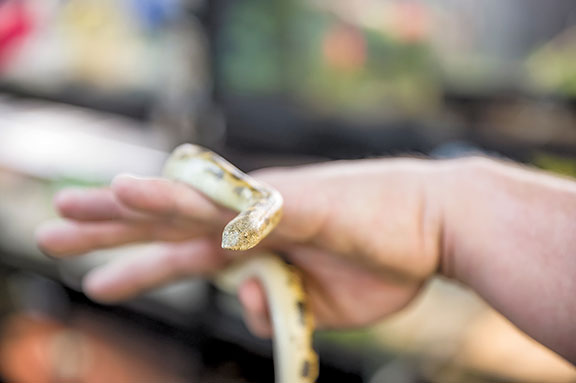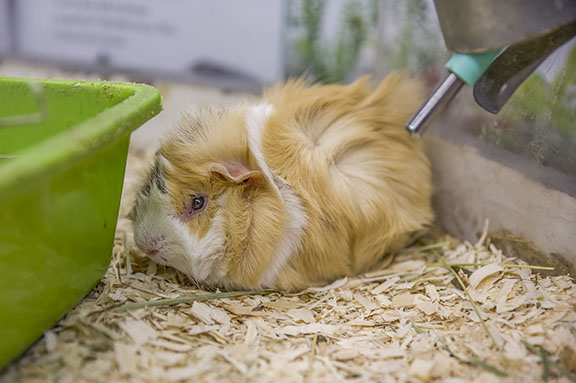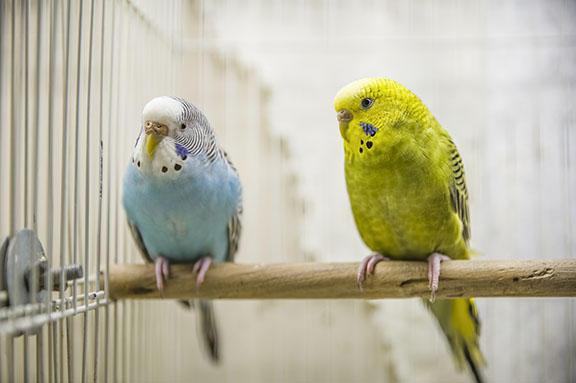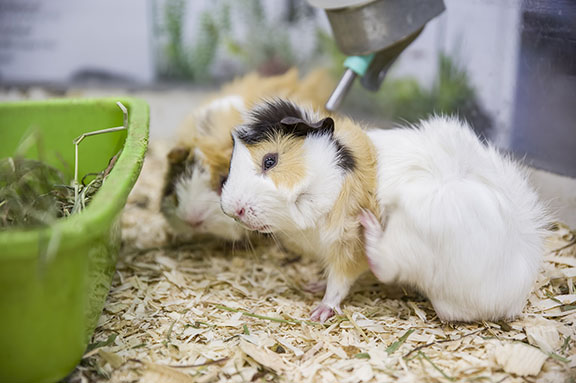By Elizabeth Wulfhorst

Cats and dogs get most of the love when it comes to adopting a family pet, but small and unusual animals can bring just as much to a household as their larger counterparts. Diminutive in size but not personality, guinea pigs, rabbits, reptiles, birds and more may be just the right fit for those looking for a furry – or scaly – companion.
The American Pet Products Association releases a National Pet Owners Survey every other year showing pet ownership trends, among other data. The 2021-22 survey reports an estimated 70 percent of United States households own a pet. Millennials are more likely to own pets than Baby Boomers and Gen Xers.
The report also showed 60 percent of respondents own saltwater fish, 46 percent own birds and 46 percent own some type of small animal. Those numbers are as high or even higher than dog and cat ownership – 47 and 40 percent, respectively.
According to T.J. Moss, the owner of Fins & Feathers in Red Bank, “Anything other than a dog and a cat is primarily considered to be more of an exotic animal, which could be something as simple as a rabbit or a hamster.” And these animals need care specific to their species.
“It’s a lot more work to keep an exotic animal,” Moss explained.
He said a good pet owner looks at the behaviors the animal would exhibit in the wild and tries to replicate that in the home environment.
“A hamster wants to burrow, wants to tunnel, it wants to climb,” Moss said. “Whereas a rabbit wants to forage. They want to look for food.”
He suggests an owner find different ways to stimulate their pets, with housing, food and activities. Rabbits need “different textures to hide food in, different textures to keep their teeth filed down,” Moss noted.
Birds and other small animals can present different challenges. “With some birds… you’re going to give them more table scraps – people food – try to replicate what they’re eating in the wild. Birds are scavengers. They’ll eat fruit when it’s there, they’ll eat seeds when it’s there, but they’ll also eat meat,” he said.
In the wild, some birds will eat lizards or snakes or even other birds. Moss said that kind of diet can be replicated in captivity with worms and other foodstuffs.

Welcoming any new pet into your home can be a rewarding experience for the entire family. Pets promote compassion, discipline and responsibility. But they also require commitment, patience and financial investment, which may be greater with a small animal that requires a cage or tank and bedding that must be changed regularly, along with the toys and food you would also provide for a cat or dog.
Potential pet owners need to do their homework to understand the care required for the pet they’re bringing home, especially when children are involved. “It’s all about the children’s behavior,” Moss said, even more so than the animal’s. He considers the age of the children and does his best to find an animal that will be a perfect fit. “We do a lot of education as well,” he said.
If a family member is allergic to cats or dogs and wants to try a rabbit or guinea pig, Moss has the person with the allergy sit for up to a half hour holding the animal and then sends them home to see if a reaction develops over the next 12 hours. “If they have a reaction, it’s not the right fit.”
Small animals like rabbits can live seven to 10 years so Moss wants to make sure the family is in it “for the long haul.” He noted they don’t even entertain calls about rabbits in the run-up to Easter. “We won’t sell them unless it’s to somebody that has been coming in and looking previously.”
Fins & Feathers sells myriad small animals, from rabbits, hamsters and guinea pigs to birds, lizards, snakes and fish. They also have small animals for adoption through a program with the Monmouth County SPCA. “They have their small animal room,” Moss said, “but once that’s full, overflow is sent directly to us.”
They also offer an on-site grooming service.
If you already have a “traditional” pet like a dog or cat at home, Moss suggests taking the time to introduce the new animal properly. “I mean, I wouldn’t leave a bird alone with the cat any day” but, if handled correctly, “you will have an experience where that animal will bond with the other animals in the house,” Moss said.
“It’s just a lot about figuring out the behaviors the animal’s going to exhibit and why they’re doing that, because they can’t talk to us. So, we want to communicate, watch their behaviors” and learn how to reinforce the good ones.
Above all, a pet – whether it’s a dog or cat or something more exotic – is not a temporary playmate, but a long-term family member who will require considerable love and attention.
This article originally appeared in the April 21 – 27, 2022 print edition of The Two River Times.




















